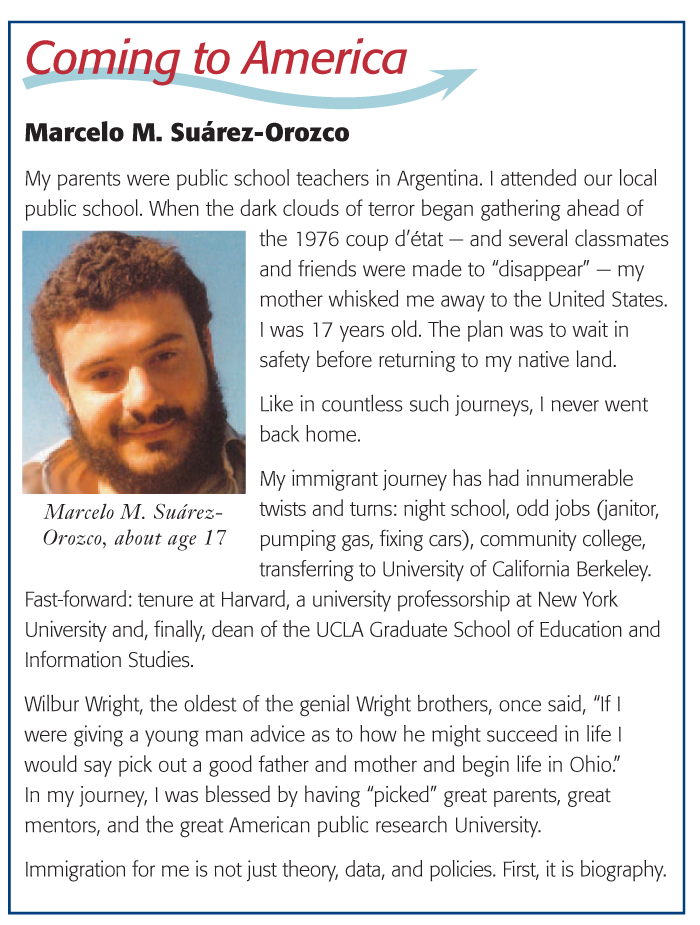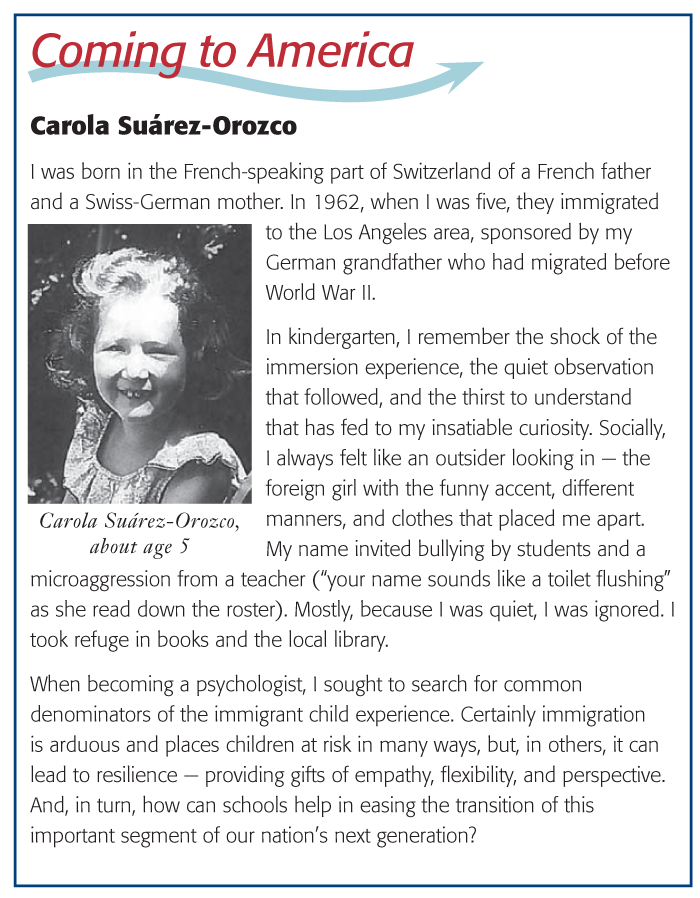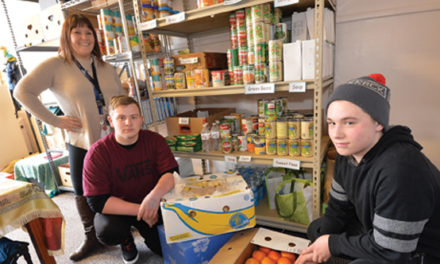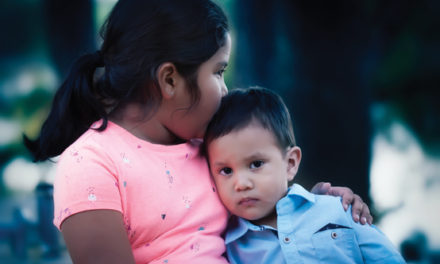The story of the children of immigration is deeply intertwined with the future of our nation.
The world is on the move, and today the lives of over a billion people are shaped by the experience of migration. All continents are involved as areas of immigration, emigration, or transit — and often as all three at once. In the 21st century, immigration is the human face of globalization — the sounds, colors, and aromas of a miniaturized, interconnected, and fragile world. During the second decade of the 21st century, over 230 million people are international migrants, about 740 million are internal migrants, and millions more are immediate relatives left behind (U.N. Department of Economic and Social Affairs, 2013). Only China (1.36 billion) and India (1.26 billion) have larger populations than this “immigration nation.” The United States has the largest number of immigrants in the world. Currently, 45.0 million (or about 14%) of all U.S. residents are foreign born (Pew Research Center, 2015).
The children of immigrants are the fruit borne of immigration. Today, 25% of children under the age of 18 — a total of 18.7 million children — have an immigrant parent. Their growth has been rapid: In 1970, the population of immigrant origin children stood at 6% of the total population of children. It reached 20% by 2000 and is projected to be 33% by 2050 (Suárez-Orozco, C., Abo-Zena, & Marks, 2015). The children of immigrants are an integral part of the national tapestry. The education and well-being of these youth touches a large swath of our child population. Their story is deeply intertwined with the future of our nation.
Most children of immigrants are born in the U.S. of foreign-born parents. They are U.S. citizens yet many nevertheless are growing up in the shadows of the law (Suárez-Orozco, C., et al., 2011). The most recent estimates suggest that 4.5 million U.S.-born children younger than age 18 are living in the U.S. with at least one parent who is an unauthorized migrant. The number of children who are themselves unauthorized has declined from a peak of 1.6 million in 2005 to about 775,000 in 2012. Altogether, about 7% of all school-aged children in the U.S. have at least one parent who is in the U.S. without authorization.
25% of children under the age of 18 in the United States — a total of 18.7 million children — have an immigrant parent.
The current wave of immigration has ushered in an era of hyper diversity. Immigrants are an extraordinarily heterogeneous group. Over 80% originate in Latin America, Asia, Africa, Oceania, or the Caribbean — the rest originate in Europe or North America. This migratory flow is a significant factor in the U.S., becoming the first high-income country in the world with a majority-minority child population.
Immigrants today are more diverse than ever. They arrive in our country from every continent on earth. The latest data tell a fascinating and dynamic story: Asians now surpass Latinos among those who have been in the U.S. for five years or less. After peaking in the early 2000s, Latino immigration is now at its lowest level in 50 years. New immigration from the Caribbean now exceeds all new immigration from Europe. The number of new immigrants from Africa grew 41% from 2000 to 2013, a significant growth when compared to other new arrivals (Pew Research Center, 2015).
Immigrants vary significantly in levels of education and skill. Some immigrant parents are among the most educated people in our nation, comprising 47% of scientists with doctorates, a quarter of all physicians, and 24% of engineers. In 2013, 41% of newly arrived immigrants had at least a bachelor’s degree. Others have low levels of education and gravitate to sectors of the U.S. labor market relying on low-skilled workers, such as agriculture, service industries, and construction. In 2013, 28% of recent arrivals lived in poverty, up from 18% in 1970. According to the U.S. Census in 2014, the official U.S. poverty rate was 14.8% of the population (Pew Research Center, 2015; U.S. Census Bureau, 2015).
With some 460 languages spoken across the land, the U.S. has a deep reservoir of linguistic diversity (Kindler, 2002). New immigrants have certainly added to our linguistic riches. The percentage of children who speak a second language at home has increased from 9% in 1979 to 21% in 2008 (NCES, 2010). Of those speaking a language other than English at home, 62% speak Spanish, 19% speak another Indo-European language, 15% speak an Asian or Pacific Island language, and the remaining 4% speak a different language (Bayley & Regan, 2004; Shin & Kominsky, 2010). Of all immigrant-origin children under age 18, 81% have parents who speak English and another language at home, and 5% live in a home where no parent or caregiver speaks English (Hernandez, 2014).
English language instruction
An important challenge for immigrant-origin children is mastering content while concurrently attaining academic language proficiency in English. Although immigrant-origin children master conversational language relatively quickly, academic language — the ability to detect nuances in multiple-choice tests or argue persuasively in an essay or in a debate — is attained on average after five to seven years of high-quality language instruction (Cummins, 2000; Hakuta, Butler, & Witt, 2000). Language mastery is further complicated when immigrant-origin children enter school having had only interrupted or limited schooling. These children also may have weak literacy foundations in the first language, or speak more than one language (Olsen, 1995).
Our nation’s inconsistent language-learning policies and practices present a variety of obstacles for learning English (García, 2014; Gándara & Contrera, 2008; Olsen, 2010; Thomas & Collier, 2002). Research on the efficacy of second-language instruction and bilingual programs reveals contradictory results. This should not be surprising given that there are nearly as many models of bilingual and second language programs as there are school districts (Thomas & Collier 2002).
As they enter school, English language learners (ELLs) are often placed in some kind of second-language instructional setting — e.g., pull-out programs, sheltered instruction, English as a second language (ESL), and dual-language instruction. But, in many districts, students are transitioned out of these settings with little rhyme or reason (Olsen, 2010; Suárez-Orozco, Suárez-Orozco & Todorova, 2008; Thomas & Collier, 2002). ESL programs often consist of limited pull-out instruction and academic support as well as immersion in regular classes. Many ESL classrooms have learners from many different countries speaking many different languages. Transitional bilingual programs focus on providing academic support to newcomers as they transition out of their language of origin into English. Dual-language immersion classes involve students’ learning half of the time in English and half in a target language (e.g. Spanish, Mandarin, etc.), with half of the class being native speakers of English and the other half native speakers of the target language. Given the predominance of Spanish-speaking ELLs, most program implementation and research in the U.S. has been done on programs targeting this specific language group (Kohler & Lazrín, 2007).
Well-designed and carefully implemented programs ease transitions, provide academic scaffolding, and nurture a sense of community. There is, however, a significant disparity in quality of instruction between settings. Many bilingual programs face implementation challenges characterized by inadequate resources, uncertified personnel, and poor administrative support (U.S. Department of Education, 2002). Because many bilingual programs lack robust support nationwide, they often do not offer the breadth and depth of courses that immigrant-origin students need to get into a meaningful college track. There is an ever-present danger that once a student enters the “ESL,” “bilingual” track, or English-language acquisition track, he or she will have difficulty switching to the “college-bound track.” Schools are seldom focused on meeting the needs of dual-language students — at best, they tend to be ignored, and, at worst, they are viewed as contributing to low performance on state mandated, high-stakes tests (Menken, 2008; Suárez-Orozco et al., 2008).
Assessment
There is considerable debate on the role of educational assessments in general and high-stakes assessments in particular in contributing to unequal outcomes for English language learners (APA, 2012; Solórzano, 2008; Valenzuela, 2005). Standardized tests used to screen for learning differences as well as for high-stakes decisions were largely designed and normed with middle-class populations (Agbenyega & Jiggetts, 1999), or they were adapted from work with those populations. Such tests assume exposure to mainstream cultural knowledge and fail to recognize culture of origin content knowledge. This can lead to underestimates of student abilities and competencies. Timed tests penalize second-language learners who process two languages before they settle on an answer (Solano-Flores, 2008). When culturally or linguistically sensitive approaches aren’t used, individual needs often go unrecognized or, conversely, they can be overpathologized (APA, 2012).
Relatedly, we should systematically recognize the sources of bias in assessment, particularly with second-language learners. When students do poorly on tests, it cannot simply be assumed that they lack the skills. Sometimes, students have not been exposed to culturally relevant materials or don’t have the vocabulary in English. At other times, retrieval time is an issue; second-language learners may simply need more time to process two languages. Double negatives are an issue for second-language learners. Unfamiliar test formats especially place newcomer immigrants at a disadvantage. Issues of cultural and linguistic fairness in assessment are a critical area of research importance (Solano-Flores & Trumbull, 2003; Solano-Flores, 2008) that must constantly and systematically be addressed when working with this population (APA, 2012).
In the current high-stakes assessment climate, school districts are sometimes pressured to prematurely reclassify students from English language learners to Fluent English Proficient (Escamilla et al., 2003). In other cases, immigrant students languish as “long-term ELLs” (Olsen, 2010). With poorly implemented school assessments and a miscellany of language learning policies, there is wide variability between districts and states in this classification — seldom is reclassification tied to the empirical evidence on what it takes to attain the level of academic language proficiency required to be competitive on standardized assessments (Kieffer et al., 2009). As higher stakes have become attached to standardized tests, this issue has heightened consequences for English language learners and schools that serve them.
Social-emotional supports in schools
As they enter new schools, immigrant-origin children and adolescents, especially newcomers, may face an array of social-emotional challenges, including acculturative stress and rebuilding family relationships following long separations (Suárez-Orozco et al., 2008) and unauthorized status. Some of the challenge of adjustment is related to language acquisition (Olsen, 2010). Before the child acquires the ability to competently express herself, she often goes through a silent phase where she becomes invisible in the classroom (Merchant, 1999). This is a period of time when students can also become vulnerable to peer bullying (Scherr & Larson, 2010; Suárez-Orozco, Suárez-Orozco, & Todorova, 2008; Qin, Way, & Mukherjee, 2008) as well as low teacher expectancies (Weinstein, 2002).
4.5 million U.S.-born children younger than age 18 are living in the United States with at least one parent who is an unauthorized migrant.
Understanding and then addressing student needs during the critical transition phase for newcomer students is an important area for intervention. Emerging research shows that schools that are strategic in helping newcomer youth adjust to their new environs may be poised to help them be more successful in their psychosocial adaptation and educational performance (Sadowski, 2013; Suárez-Orozco et al., 2013).
For instance, advisory programs that partner students with one another and with older peers can foster communities of learning and emotional support. In these advisory groups, students are encouraged to openly discuss a range of topics, from difficulties with a class to missing families and friends back home to interpersonal issues. As part of classroom instruction, writing prompts also may encourage students to share their personal migration experiences and engage them in class discussions. Activities like these help students recognize that they are not alone in facing the difficulties of transition and also help teachers get to know students (Suárez-Orozco et al., 2013).
State and federal education policies
Immigrant-origin youth are over-represented in highly segregated and impoverished urban settings (Orfield, 2014). These children have little contact with middle-class Americans and are effectively isolated by ethnicity, poverty, and language (Duncan & Murnane, 2013; Orfield & Lee, 2006; Schwartz & Stiefel, 2011). This “triple segregation” is associated with a variety of negative educational experiences and outcomes, including overcrowding, low expectations, low academic standards, low achievement, school violence, and high dropout rates (Gándara & Contreras, 2008; Tseng & Lesaux, 2009). Many immigrant youth are served by Title I schools, which are profoundly influenced by requirements of federal and state policies. It is critical that teachers become aware of the implications of these policies for students.
No Child Left Behind (NCLB) had specific components focused on ELLs. The law required annual English language proficiency exams for ELL students. All students were tested in math and science beginning in their first year of enrollment, though accommodations were made to test ELL students in their mother tongue. More contentious were new federal regulations regarding English language arts (ELA) and reading assessments. In particular, ELLs were not supposed to be tested using the same exam as native speakers, but regulations did not dictate to states the contents of the ELA exam. Though research has consistently shown that, no matter the age, developing academic English language takes time (Cummins, 2000), many states used standard ELA exams after one year of enrollment to assess Adequate Yearly Progress. Thus an impossible benchmark was set that would penalize schools with high numbers of ELLs, placing them at risk of losing standing and funding under NCLB (Escamilla et al., 2003).
Like NCLB, the Common Core State Standards place considerable emphasis on standardized assessments and are highly English-language dependent. Math assessments, for example, require not only solving computation problems but responding to word problems — tasks that require English language skills. This has implications for ELLs, and efforts have begun to adopt interventions to support the Common Core for ELL students (International Reading Association, 2012).
By documenting which groups and sites are doing well in comparison to others and by providing insights into the processes that account for differences, as well as alternative strategies for assessment, teachers and researchers can begin to shed light on practices, programs, and policies that can make a difference for new Americans.
Immigrant-origin youth are the fastest-growing student population in our country. They often arrive sharing an optimism and hope in the future that must be cultivated and treasured; almost universally, they recognize that schooling is the key to a better tomorrow. Over time, however, many immigrant youth, especially those enrolling in impoverished, segregated, and mediocre schools, face negative odds and uncertain prospects. Too many leave schools without developing and mastering the higher-order skills, communication, and cultural sensibilities needed in today’s global economy and society.
The shared fortunes of immigrant and native citizens alike will be tied to successfully linking our youngest new Americans to the educational and economic opportunity structure, to civic belonging, and full democratic participation. Embracing immigrant children and cultivating their full potential is the education challenge of our generation. The stakes are high: Their future is our future.
References
Agbenyega, S. & Jiggetts, J. (1999). Minority children and their over-representation in special education. Education-Indianapolis, 119, 619-632.
American Psychological Association (APA). (2012). Crossroads: The psychology of immigration in the new century. APA presidential task force on immigration. Washington, DC: Author. www.apa.org/topics/immigration/report.aspx.
Bayley, R. & Regan, V. (2004). Introduction: The acquisition of sociolinguistic competence. Journal of Sociolinguistics, 8, 323-338.
Cummins, J. (2000). Language, power, & pedagogy. Bristol, UK: Multilingual Matters.
Duncan, G.J. & Murname, R.J. (2013). Restoring opportunity: The crisis of inequality and the challenge of American Education. Cambridge, MA & New York, NY: Harvard Education Press & Sage Foundation.
Escamilla, K., Mahon, E., Riley-Bernal, H., & Rutledge, D. (2003). High-stakes testing, Latinos, and English language learners: Lessons from Colorado. Bilingual Research Journal, 27 (1), 25-49.
Gándara, P. & Contreras, F. (2008). Understanding the Latino education gap — Why Latinos don’t go to college. Cambridge, MA: Harvard University Press.
García. O. (2014). U.S. Spanish & education: Global and local intersection. Review of Research in Education 38, 58-80.
Hakuta, K., Butler, Y.K. & Witt, D. (2000). How long does it take English learners to attain proficiency? Berkeley, CA: University of California Linguistic Minority Research Institute.
Hernández, D. (2014, February, 28). Lecture. UCLA Program on International Migration. Los Angeles, CA. UCLA.
International Reading Association. (2012). Literacy implementation guidance for the ELA Common Core standards. Newark, DE: Author.
Kieffer, M.J., Lesaux, N.K., Rivera, M., & Francis, D.J. (2009). Accommodations for English language learners taking large-scale assessments: A meta-analysis on effectiveness and validity. Review of Educational Research, 79 (3), 1168-1201.
Kindler, A.L. (2002). Survey of the states’ limited English proficient students and available educational programs and services, 2000-01 summary report. Washington, DC: National Clearinghouse for English Language Acquisition and Language Instruction Educational Programs.
Kohler, A.D. & Lazarín, M. (2007). Hispanic education in the United States: Statistical brief, No. 8. Washington, DC: National Council of La Raza. http://bit.ly/1GBtgWr
Menken, K. (2008). English language learners left behind: Standardized testing as language policy. Bristol, UK: Multilingual Matters.
Merchant, B. (1999). Ghosts in the classroom: Unavoidable casualties of a principal’s commitment to the status quo. Journal of Education for Students Placed at Risk, 4 (2), 153-171.
National Center for Education Statistics (NCES). (2010). The condition of education 2010. Washington, DC: U.S. Department of Education.
Olsen, L. (1995). School restructuring and the needs of immigrant students. In R.G. Rumbaut & W.A. Cornelius (Eds.), California’s immigrant children: Theory, research, and implications for educational policy (pp. 209-231). Boulder, CO: Lynne Rienner Publishers.
Olsen, L. (2010). Reparable harm fulfilling the unkept promise of educational opportunity for California’s long-term English learners. Emeryville, CA: California Tomorrow. http://bit.ly/1MZGHMG
Orfield, G. & Lee, C. (2006). Racial transformation and the changing nature of segregation. Cambridge, MA: The Civil Rights Project at Harvard University.
Orfield, G. (2014). Brown at 60: Great progress, a long retreat, and an uncertain future. Los Angeles, CA: The Civil Rights Project at UCLA.
Pew Research Center. (2015, September). Modern immigration wave brings 59 million to U.S., driving population growth and change through 2065: Views of immigration’s impact on U.S. society mixed. Washington, DC: Author.
Qin, D.B., Way, N., & Mukherjee, P. (2008). The other side of the model minority story: The familial and peer challenges faced by Chinese-American adolescents. Youth & Society, 39 (4), 480-506.
Sadowski, M. (2013). Portraits of promise: Voices of successful immigrant students. Cambridge, MA: Harvard Education Press.
Scherr, T.G. & Larson, J. (2010). Bullying dynamics associated with race, ethnicity, and immigration status. In S.R. Jimerson, S.M. Swearer, & D.L. Espelage (Eds.), Handbook of bullying in schools: An international perspective (pp. 223-234). New York, NY: Routledge.
Schwartz, A.E. & Steifel, L. (2011). Immigrants and inequality in public schools. In G.J. Duncan & R.J. Murnane (Eds.), Whither opportunity: Rising inequality, schools, and children’s life chances (pp. 3-23). New York, NY & Chicago, IL: Sage Foundation & Spencer Foundation.
Shin, H.B. & Kominsky, R.A. (2010). Language use in the United States: 2007. Washington, DC: U.S. Census Bureau. http://1.usa.gov/1RisGNG
Solano-Flores, G. (2008). Who is given tests in what language by whom, when, and where? The need for probabilistic views of language in the testing of English language learners. Educational Researcher, 37 (4), 189-99.
Solano-Flores, G. & Trumbull, E. (2003). Examining language in context: The need for new research and practice paradigms in the testing of English-language learners. Educational Researcher, 32 (2), 3-13.
Solórzano, R.W. (2008). High-stakes testing: Issues, implications, and remedies for English language learners. Review of Educational Research, 78 (2), 260-329.
Suárez-Orozco, M. & Suárez-Orozco, C. (2013, Fall). Taking perspective: Context, culture, and history. In M.G. Hernández, J. Nguyen, C.L. Saetermoe, & C. Suárez-Orozco (Eds.), Frameworks and ethics for research with immigrants: New directions for child and adolescent development, 141, 9-23. San Francisco, CA: Jossey-Bass.
Suárez-Orozco, C., Abo-Zena, M. & Marks, A. (Eds.). (2015). Transitions: The development of children of immigrants. New York, NY: New York University Press.
Suárez-Orozco, C., Martin, M., Alexandersson, M., Dance, L.J., & Lunneblad, J. (2013). Promising practices: Preparing children of immigrants in New York and Sweden. In R. Alba & J. Holdaway (Eds.), The children of immigrant in school: A comparative look at integration in the United States and Western Europe (pp. 204-251). New York, NY: New York University Press.
Suárez-Orozco, C., Suárez-Orozco, M., & Todorova, I. (2008). Learning in a new land: Immigrant adolescents in America. Cambridge, MA: Harvard University Press.
Suárez-Orozco, C., Yoshikawa, H., Teranishi, T., & Suárez-Orozco. M. (2011). Living in the shadows: The developmental implications of undocumented status [Special issue]. Harvard Education Review, 81, 438-472.
Thomas, W.P. & Collier, V.P. (2002). A national study of school effectiveness for language minority students’ long-term academic achievement. Washington, DC: U.S. Dept. of Education, Center for Research on Education, Diversity & Excellence.
Tseng, V. & Lesaux, N. (2009). Immigrant students. 21st-century education: A reference handbook. Thousand Oaks, CA: Sage.
U.N. Department of Economic and Social Affairs. (2013). Population Division. New York, NY: Author. http://bit.ly/1VUkc5U
U.S. Census Bureau. (2015). Poverty. Washington, DC: Author. http://1.usa.gov/1NeSPfb
U.S. Department of Education. (2002). 1999-2000 schools and staffing survey: Overview of the data for public, private, public charter, and Bureau of Indian Affairs elementary and secondary schools. Washington, DC: Office of Educational Research and Improvement, National Center for Education Statistics.
Valenzuela, A. (Ed.). (2005). Leaving children behind: How “Texas-style” accountability fails Latino youth. Albany, NY: SUNY Press.
Weinstein, R.S. (2002). Reaching higher. Cambridge, MA: Harvard University Press.
Citation: Suárez-Orozco, M. & Suárez-Orozco, C. (2015). Children of immigration. Phi Delta Kappan, 97 (4), 8-14.


ABOUT THE AUTHOR

Carola Suárez-Orozco
CAROLA SUÁREZ-OROZCO is a professor of education at UCLA and cofounder of Re-Imagining Migration.










